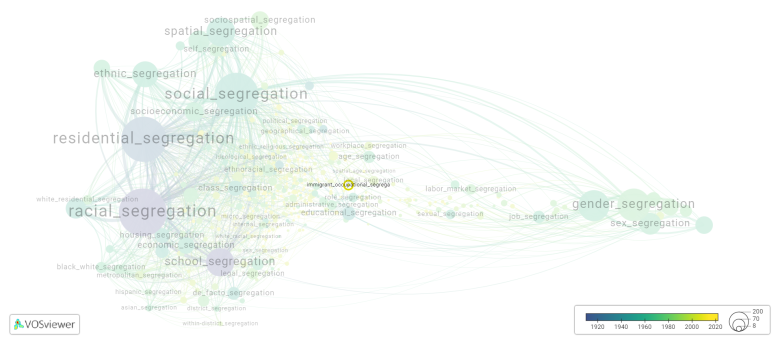Immigrant occupational segregation
Date and country of first publication[1]
2017
United States
Definition
Immigrant occupational segregation refers to the phenomenon where immigrants tend to be concentrated in specific industries or occupations, often occupying lower-skilled or lower-paying jobs compared to native-born individuals. This segregation can be influenced by various factors, including language barriers, differences in education and training, discrimination, and limited social networks.
There are several key patterns of occupational segregation among immigrants:
1. Concentration in specific industries: Immigrants are often concentrated in certain sectors such as agriculture, construction, manufacturing, or domestic work. These industries may offer low-skilled or labor-intensive jobs that are more accessible to immigrants, especially those with limited English proficiency or education.
2. Lower-skilled occupations: Immigrants are more likely to be employed in lower-skilled or unskilled occupations, such as janitorial work, food service, or caregiving. This is partly a result of limited educational opportunities or recognition of qualifications earned in their home countries.
3. Occupational downgrading: Immigrants may experience a downward shift in their occupational status compared to their pre-migration jobs. This can be attributed to factors such as the lack of recognition of foreign credentials, language barriers, or discrimination in the labor market.
4. Ethnic enclaves: Immigrants often form communities or ethnic enclaves where they live and work in close proximity to others from their home country. This can contribute to occupational segregation as these enclaves may create a network where job opportunities are shared within the community, leading to concentrated employment in specific industries or occupations.
The consequences of immigrant occupational segregation can be significant. It can contribute to lower overall wages for immigrants, limited upward mobility, and higher levels of poverty and economic inequality within immigrant communities. Additionally, occupational segregation can perpetuate stereotypes and discrimination against immigrants, limiting their access to higher-skilled and higher-paying job opportunities.
Efforts to address immigrant occupational segregation include improving language skills and educational opportunities, promoting the recognition of foreign qualifications, combating discrimination in hiring practices, and implementing policies that support the integration of immigrants into the labor market.
See also
Related segregation forms
Immigrant occupational segregation is frequently discussed in the literature with the following segregation forms:
This visualization is based on the study The Multidisciplinary Landscape of Segregation Research.
For the complete network of interrelated segregation forms, please refer to:
References
Notes
- ↑ Date and country of first publication as informed by the Scopus database (December 2023).
Immigrant occupational segregation appears in the following literature
Fan W., Qian Y. (2017). Native immigrant occupational segregation and worker health in the United States, 2004 2014. Social Science and Medicine, 183(), 130-141. Elsevier Ltd.https://doi.org/10.1016/j.socscimed.2017.04.029

